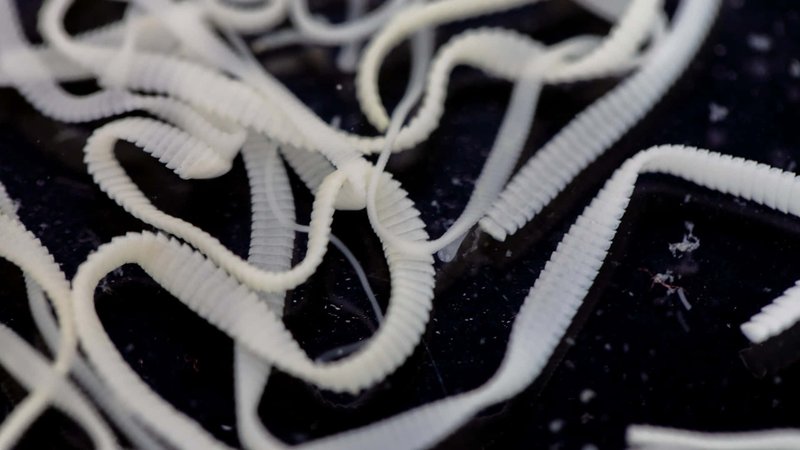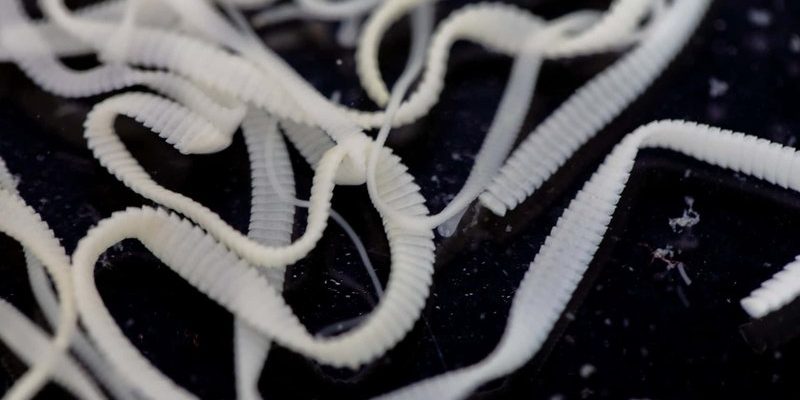
Guppy tapeworms belong to a group of flatworms known as *Bothriocephalidea*, and they can be pretty specific about their home turf. They thrive in freshwater environments around the world, from tropical rivers to backyard ponds. In this article, we’ll dive deep into their global distribution, what factors affect their range, and why it matters for both aquarists and ecologists alike. So grab your favorite drink, and let’s unravel the mysteries of these fascinating flatworms together!
What Are Guppy Tapeworms?
Before we tackle their distribution, let’s clarify what guppy tapeworms actually are. Imagine a long, flat ribbon swimming through the intestines of a fish—that’s your tapeworm. They attach themselves to the intestinal walls of their hosts, mainly guppies, using structures called scolex. This allows them to absorb nutrients directly from the host’s digested food.
These tapeworms reproduce by shedding segments filled with eggs, which are then expelled into the water, where they can infect new hosts. Here’s something to ponder: in a world teeming with microorganisms, how do these tapeworms manage to find their way to the right fish host? Their life cycle involves various stages, and it’s all connected to the environments they inhabit.
In terms of appearance, guppy tapeworms can be quite long—some species can reach several inches. They often have a segmented body, giving them a distinct look that can be somewhat unsettling. But don’t let their appearance fool you—they play an integral role in their ecosystems.
Global Distribution of Guppy Tapeworms
So, where exactly can these tapeworms be found? Guppy tapeworms have a documented presence across multiple continents. Their range is primarily in freshwater environments, but specific regions are more conducive to their survival. For instance, tropical climates with abundant freshwater sources tend to support higher populations of guppy tapeworms.
– North America: In the United States, these tapeworms are commonly found in ponds and streams where guppies are present. They thrive in warm waters, especially in southern states.
– South America: Countries like Brazil and Colombia provide ideal habitats with their rich biodiversity and vast river systems.
– Africa: In sub-Saharan Africa, guppy tapeworms are found in numerous freshwater bodies, often emphasizing the diversity of fish species available for hosting.
– Asia: In countries like India and Thailand, guppy tapeworms flourish in aquaculture and natural water bodies, affecting both wild and farmed fish populations.
– Europe and Australia: These regions have varying reports of guppy tapeworms, primarily associated with aquarium fish trade, where
guppies are often kept.
The common thread connecting these regions is the presence of suitable freshwater habitats and guppy populations.
Factors Influencing Distribution
You might be wondering, what keeps these tapeworms in certain areas while others go uninhabited? Several factors shape their range, including:
– Water Temperature: Guppy tapeworms prefer warmer waters. Their activity levels and reproduction rates are significantly influenced by temperature; warmer waters usually enhance their life processes.
– Host Availability: Without guppies and similar fish species to latch onto, these tapeworms wouldn’t have much of a chance. Think of it as being invited to a buffet—you can’t eat if there’s no food, right?
– Ecosystem Health: Tapeworms thrive in healthy ecosystems. Pollution, habitat destruction, or severe climate changes can lead to declines in both fish populations and the parasitic tapeworms. A disrupted environment throws the balance off, making finding hosts challenging.
– Human Activity: Aquaculture, fish trading, and introduction of species into new environments can accidentally spread guppy tapeworms to new areas. For example, transporting guppies for aquarium purposes might inadvertently introduce tapeworms into new ponds or lakes.
Understanding these factors can help in managing and controlling guppy tapeworm populations, especially in aquaculture and conservation efforts.
Impact on Fish Health
You might be thinking, “How does a tapeworm impact its fish host?” Well, the effects can range from mild inconvenience to serious health issues. Guppy tapeworms can lead to:
– Nutritional Deficiencies: By absorbing nutrients directly from their hosts, these tapeworms can deprive fish of essential vitamins and minerals, leading to poor growth and development.
– Weakness and Stress: In heavily infested fish, the energy diverted to combat the tapeworms can result in overall weakness. This stress makes them more susceptible to other diseases, creating a vicious cycle.
– Reproductive Issues: In severe cases, heavy infestations can even affect the reproductive capabilities of their fish hosts, impacting local fish populations.
Fish owners need to keep an eye out for signs of infestation. If guppies appear lethargic or show changes in eating habits, it might be time for a closer look.
Prevention and Control Measures
If you’ve got guppies at home, preventing guppy tapeworm infestations is key. Here are some steps you can take:
1. Regular Tank Maintenance: Clean your aquarium regularly, removing uneaten food and waste that can harbor parasites.
2. Quarantine New Fish: Always quarantine new fish before introducing them to your main tank. This gives you time to monitor for any signs of infection.
3. Healthy Diet: Ensure your guppies get a balanced diet rich in nutrients. A healthy fish is less susceptible to parasites.
4. Consult Professionals: If you suspect your fish are infested, it’s best to consult a veterinarian. They can provide appropriate treatments to eliminate tapeworms while minimizing harm to the fish.
By taking these preventive measures, you can help keep your guppies happy and tapeworm-free.
Guppy tapeworms might seem like little menaces in the aquatic world, but they also tell us a larger story about freshwater ecosystems. Understanding their documented range and distribution helps us grasp how intricate life underwater can be. From their presence in North America to the ecosystems in South America and beyond, these flatworms reveal clues about fish health and environmental balance.
Whether you’re a fish enthusiast, an aquarist, or just someone curious about the underwater world, knowing about guppy tapeworms is crucial. By learning about where they’re found and how they interact with their environment, we can better understand the delicate balance of life in our water bodies. Let’s keep the conversation about these fascinating creatures going—after all, the more we know, the better we can protect our planet’s aquatic ecosystems!

